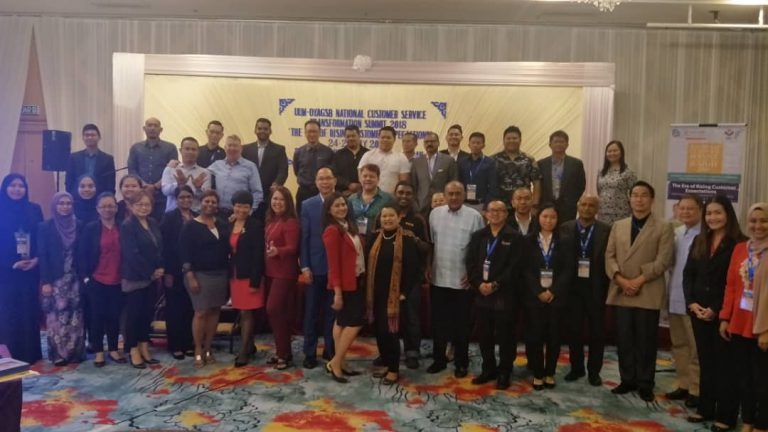The Rising Heat Beneath Our Skies
You’ve probably felt it too. Hotter days than you remembered as a child, longer heatwaves, or even unexpected floods in unseasonal weather. Perhaps you’ve noticed your air conditioner working overtime or read the news about yet another “hottest month ever recorded.” These aren't random coincidences. They are signs of global warming.
Global warming refers to the long-term increase in the average temperature of the Earth's atmosphere, largely due to increased concentrations of greenhouse gases (GHG), like carbon dioxide (CO₂), methane (CH₄), and nitrous oxide (N₂O). These gases trap Earth’s heat from radiating outwards into space. It is a natural phenomenon known as the greenhouse effect, but human activities have intensified it dramatically over the last century.
Among the main human activity that drives global warming is the burning of fossil fuels such as coal, oil, and gas for electricity and transportation. It is also driven by emissions from landfills, livestock industry, and industrial processes. As of March 2025, NASA reported that CO₂ levels in the atmosphere have exceeded 420 ppm, [1] reaching its highest point in at least 800,000 years. [2]
But how much is the Earth really heating up? Recent data shows that the global surface temperature for April 2025 is 1.22°C above pre-industrial levels. [3] However, the World Meteorological Organization (WMO) reported that in 2024, global surface temperatures actually peaked to 1.55°C above pre-industrial times, making it the hottest year on record! [4] [5]
Although the Paris Agreement’s target limit of 1.5°C [6] technically hasn’t yet been surpassed, since the agreement considers long term changes over decades rather than fluctuations in individual years, [2] this trend slaps humanity as a stern wake-up call. The Intergovernmental Panel on Climate Change (IPCC) warns that exceeding the 1.5°C limit could lead to irreversible impacts on ecosystems, sea levels, and human livelihoods. [7]
What does this mean for us? The impacts are broad and already visible. Ice sheets at the poles are melting at alarming rates, causing global sea levels to rise. [8] Low-lying cities like Jakarta are at risk of being submerged. [9] Ocean temperatures are increasing, causing coral reefs to bleach and disrupting marine biodiversity. [10] [11]
On land, warmer temperatures intensify droughts, disrupt food production, and worsen wildfires, such as those that ravaged Australia in 2019–2020 and Canada in 2023. [12] [13] [14]
Even our health is affected. The World Health Organization (WHO) has linked global warming to rising cases of heat-related illnesses, heart problems, and the wider spread of diseases like dengue and malaria, as mosquitoes thrive in warmer temperatures. Vulnerable groups such as children, the elderly, and low-income communities are most affected by these health risks. [15] [16] [17]
One of the more concerning aspects is the feedback loop. As polar ice melts, it exposes darker ocean surfaces that absorb more sunlight, speeding up the warming. [8] When permanently frozen ground (permafrost) melts, it releases methane, a powerful greenhouse gas, which makes global warming even worse. [18] These repeating effects make it harder to slow down climate change, so taking action becomes even more urgent.
So, are we doomed? Not necessarily. Humanity still has a narrow window to act, and many are already stepping up.
The Malaysian government, for example, has adopted meaningful steps toward reducing its carbon footprint in recent years. With the launch of the National Energy Transition Roadmap (NETR) in 2023, the government aims to decarbonise the energy sector and attract up to RM1.3 trillion in investment by 2050. [19] [20]
This roadmap is a call to action for local industries to pivot towards cleaner technologies and low-carbon business models.
Building on national progress, PETRONAS is redefining its role in a warming world. It’s not only targeting net-zero emissions by 2050 but also investing in renewable energy, hydrogen, and carbon capture. Through its Energy Transition Strategy, the company is shifting from traditional fuels to cleaner options, supporting Malaysia’s climate goals and staying relevant in a low-carbon future. [21]
Similarly, key players in Malaysia’s manufacturing, agribusiness, and financial sectors are also stepping up. Sime Darby targets net-zero emissions by 2050, while IOI aims for 2040 and has already cut operational GHG intensity by 40% from its 2015 baseline. [22] [23]
Furthermore, Maybank reported in 2024 that it had provided over RM46.6 billion in sustainable financing, positioning itself as the regional leader in supporting low-carbon and inclusive growth. [24]
While large corporations often lead the spotlight on sustainability, small and medium enterprises (SMEs) are also becoming key players in climate action. Globally, SMEs are estimated to produce 60–70% of industrial GHG emissions, while contributing 50% to global GDP and providing most of the world’s jobs. [25]
In Malaysia, they make up 97% of business establishments and contribute 39% to national GDP. [26] [27]
With rising awareness, growing supply chain expectations, and access to over RM1 billion in green financing, more SMEs are starting to track their GHG emissions, adopt energy-efficient technologies, and integrate sustainable practices into their operations. [28] [29] [30]
With the right policies, funding, and regional support, SMEs can evolve from being forgotten polluters to inspiring innovators of Malaysia’s low-carbon future.
The rising heat beneath our skies is no longer a problem for tomorrow, rather it is a crisis we face today. From melting ice caps to rising sea levels, the planet is responding in extreme changes. Yet within this crisis, we are not left without option, we can change it. Governments can set bold policies, businesses can adopt sustainable practices, and individuals can make everyday choices that ripple across generations. The future is not yet written, but the pen is in our hands.
References :
- National Aeronautics and Space Administration (NASA). (2025). Carbon Dioxide.
climate.nasa.gov/vital-signs/carbon-dioxide/?intent=121 - World Meteorological Organization (WMO). (2025). State of the Global Climate 2024.
library.wmo.int/viewer/69455/...navigator=1 - National Oceanic and Atmospheric Administration (NOAA). (2025). Assessing the Global Climate in April 2025.
www.ncei.noaa.gov/news/global-climate-202504 - World Meteorological Organization (WMO). (2025). WMO confirms 2024 as warmest year on record at about 1.55°C above pre-industrial level.
wmo.int/news/media-centre/... - National Oceanic and Atmospheric Administration (NOAA). (2025). 2024 was the world’s warmest year on record.
www.noaa.gov/news/2024-was-worlds-warmest-year-on-record - United Nations Framework Convention on Climate Change (UNFCCC). (n.d.). The Paris Agreement.
unfccc.int/process-and-meetings/the-paris-agreement - Intergovernmental Panel on Climate Change (IPCC). (2022). Summary for Policymakers.
www.ipcc.ch/report/ar6/wg2/... - World Economic Forum (WEF). (2025). Sea level rise: Everything you need to know.
www.weforum.org/stories/2025/03/rising-sea-levels-global-threat/ - World Economic Forum (WEF). (2019). These 11 sinking cities could disappear by 2100.
www.weforum.org/stories/2019/09/11-sinking-cities-... - Universiti Malaysia Terengganu (UMT). (2024). Coral bleaching affects the ecosystem.
www.umt.edu.my/highlight-2024/kelunturan-terumbu-... - World Wildlife Fund (WWF). (2025). Everything You Need to Know about Coral Bleaching—And How We Can Stop It.
www.worldwildlife.org/pages/everything-you-need-to-know-about-coral-bleaching-and-how-we-can-stop-it - Shiv Bolan, Lokesh P. Padhye, Tahereh Jasemizad, Muthusamy Govarthanan, N. Karmegam, Hasintha Wijesekara, Dhulmy Amarasiri, Deyi Hou, Pingfan Zhou, Basanta Kumar Biswal, Rajasekhar Balasubramanian, Hailong Wang, Kadambot H.M. Siddique, Jörg Rinklebe, M.B. Kirkham, Nanthi Bolan. (2024). Impacts of climate change on the fate of contaminants through extreme weather events. Science of The Total Environment, 909(168388).
doi.org/10.1016/j.scitotenv.2023.168388 - National Oceanic and Atmospheric Administration (NOAA). (2020). Catastrophic wildfires in southeastern Australia in 2019-20.
www.climate.gov/news-features/event-tracker/catastrophic-wildfires-southeastern-australia-2019-20 - United Nations Office for Disaster Risk Reduction (UNDRR). (2024). Canada wildfires, 2023 - Forensic analysis.
www.undrr.org/resource/canada-wildfires-2023-forensic-analysis - World Health Organization (WHO). (2023). Climate Change.
www.who.int/news-room/fact-sheets/detail/climate-change-and-health - World Health Organization (WHO). (2024). Vector-borne diseases.
www.who.int/news-room/fact-sheets/detail/vector-borne-diseases - World Health Organization (WHO). (2024). Heat and health.
www.who.int/news-room/fact-sheets/detail/climate-change-heat-and-health - United States Environmental Protection Agency (USEPA). (2024). Climate Change Indicators: Permafrost.
www.epa.gov/climate-indicators/climate-change-indicators-permafrost - Ministry of Economy. (2023). National Energy Transition Roadmap.
ekonomi.gov.my/sites/default/files/2023-08/National%20Energy%20Transition%20Roadmap.pdf - Malayan Investment Development Authority (MIDA). (n.d.). National Energy Transition Roadmap (NETR): Charting a Path to a Sustainable Energy Landscape.
www.mida.gov.my/national-energy-transition-roadmap-netr-charting-a-path-to-a-sustainable-energy-landscape/ - PETRONAS Gas Berhad (PGB). (2025). Sustainability Report 2024: Catalysing Growth Shaping Tomorrow.
www.petronas.com/pgb/sites/default/files/2025-03/PGB%20Sustainability%20Report%202024.pdf - Sime Darby Berhad. (2025). Sustainability Report 2024: Accelerating Forward Driven By Growth.
www.sime.com/wp-content/uploads/2025/01/simedarby_berhad_ar_2024_interactive_18_oct24.pdf - IOI Corporation Berhad. (2025). Sustainability Report 2024: Enhancing Biodiversity Transitioning Together.
www.ioigroup.com/integrated-report/sr/2024/ - Malayan Banking Berhad (Maybank) (2025). Sustainability Report 2024: Purpose Driven.
www.maybank.com/en/sustainability.page - Economic and Social Commission for Asia and the Pacific (ESCAP). (2025). Unlocking Opportunities for the Green Transition of SMEs.
www.unescap.org/blog/unlocking-opportunities-green-transition-smes?utm - Climate Bonds Initiative (CBI). (2025). Climate Bonds Taxonomy.
www.climatebonds.net/standard/taxonomy - Moody’s Investor Services. (2024). Global Climate Transition Risks Assessment.
www.moodys.com/researchdocumentcontentpage.aspx?docid=PBC_1308029 - Bloomberg. (2024). Carbon Market Outlook 2025.
www.bloomberg.com/professional/blog/carbon-market-outlook-2025/ - Global Carbon Project. (2025). Carbon Budget 2025. www.globalcarbonproject.org/carbonbudget/25/files/GCP_CarbonBudget_2025.pdf
-
Asia-Pacific Adaptation Network (APAN). (2024). APAN Synthesis Report 2024.
www.asiapacificadapt.net/wp-content/uploads/2024/12/APAN_Synthesis_Report_2024.pdf







